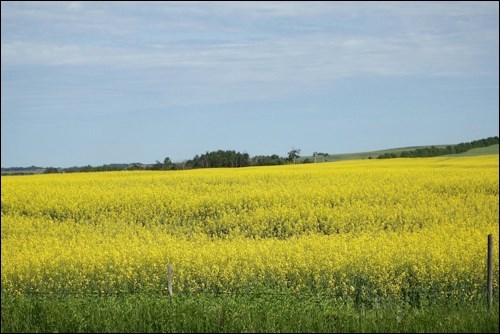The federal government wants to plant the seed of an open air climate change laboratory on Saskatchewan farmland.
Minister of Agriculture and Agri-Food Marie-Claude Bibeau wants the lab to act as a hub, bringing farmers and scientists together to find best practices for a sector facing the brunt of climate change.
"The aim of this program is for every province in Canada to have at least one hub of collaboration," she said on Thursday.
"Each hub will centre on real farms where farmers and researchers can co-develop and widely share their best practices."
The federal government has earmarked $185 million over the next 10 years to kick-start the project. The first phase launches April 1 and aims to create proposals for the hubs, known as “living labs,” by offering grants of up to $100,000.
The second phase is slated to begin in the fall; up to $10 million is to be spent per project.
Indigenous organizations and non-profit groups may also be considered for funding, a news release added.
The money is an expansion of the federal government's living labs program, which is currently active in Manitoba, Ontario, Quebec, and Prince Edward Island.
Some of the practices up for study include cover crops, intercropping, conversion of marginal land to permanent cover, shelterbelts, nutrient management, and inclusion of pulse crops in rotations, a Thursday news release said.
Federal funding for farm research is positive, but "the devil is always in the details," said Agricultural Producers Association of Saskatchewan (APAS) President Todd Lewis.
If the projects are successful, it could reveal valuable information about farming in Saskatchewan, he said.
Saskatchewan producers are open to research opportunities and benefit from close ties with the University of Saskatchewan and the University of Regina, he said. First Nations in Saskatchewan with large agricultural footprints may also be strong candidates, Lewis added.
Farm groups encouraging their members to participate could help uptake, but that also goes for individual producers looking to improve their best practices.
Lewis pointed to shelterbelts as an example of a strong possible research project. Many of the lines of trees and shrubs forming barriers on farmland have been removed in Saskatchewan, making them prime targets for study.
Ongoing issues with pollinators may also mean they're well suited to be reestablished, potentially as a collaboration between researchers, canola growers and APAS members, Lewis said.
"Hopefully, the money's accessible and we're able to get some good projects up and running."




